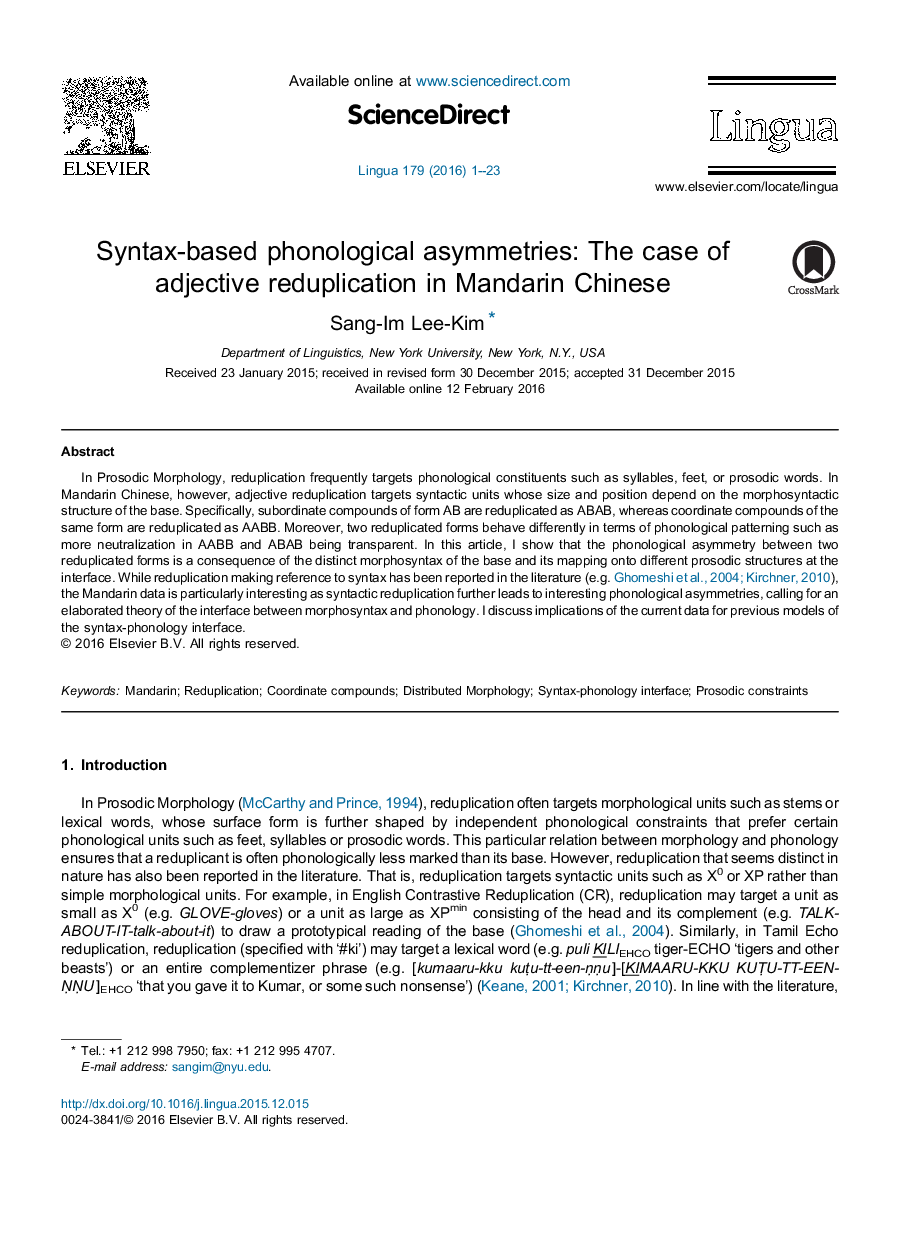| Article ID | Journal | Published Year | Pages | File Type |
|---|---|---|---|---|
| 935219 | Lingua | 2016 | 23 Pages |
•Reduplication in Mandarin Chinese is sensitive to the morphosyntax of the base.•AABB reduplication involves morpheme lowering and morpheme copying.•Reduplicated forms are mapped onto prosodic units of different sizes.•Longer prosodic words are more subject to prosodic constraints.
In Prosodic Morphology, reduplication frequently targets phonological constituents such as syllables, feet, or prosodic words. In Mandarin Chinese, however, adjective reduplication targets syntactic units whose size and position depend on the morphosyntactic structure of the base. Specifically, subordinate compounds of form AB are reduplicated as ABAB, whereas coordinate compounds of the same form are reduplicated as AABB. Moreover, two reduplicated forms behave differently in terms of phonological patterning such as more neutralization in AABB and ABAB being transparent. In this article, I show that the phonological asymmetry between two reduplicated forms is a consequence of the distinct morphosyntax of the base and its mapping onto different prosodic structures at the interface. While reduplication making reference to syntax has been reported in the literature (e.g. Ghomeshi et al., 2004 and Kirchner, 2010), the Mandarin data is particularly interesting as syntactic reduplication further leads to interesting phonological asymmetries, calling for an elaborated theory of the interface between morphosyntax and phonology. I discuss implications of the current data for previous models of the syntax-phonology interface.
